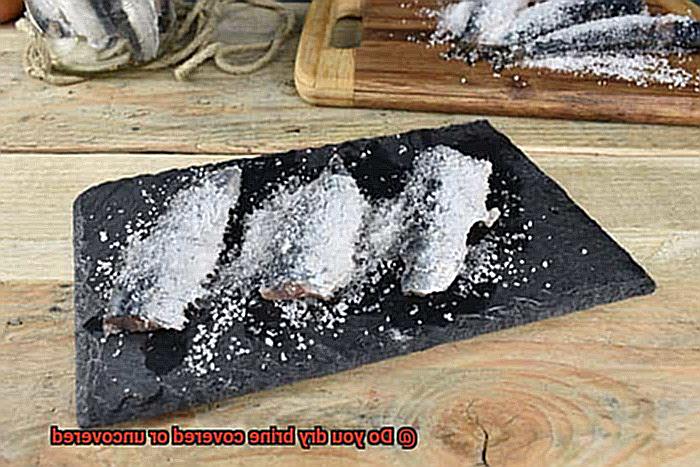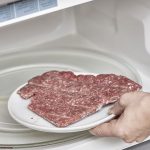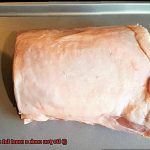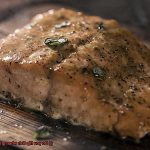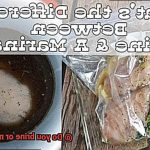Dry brining has become a go-to technique for many home cooks and professional chefs. It’s a simple, yet effective way to infuse meat with flavor and tenderize it at the same time. The process involves rubbing salt (and sometimes other seasonings) onto the meat and letting it sit in the refrigerator for a specific amount of time.
But here’s where things get tricky: should you cover or leave the meat uncovered during the dry brining process? This question has sparked a debate among cooking enthusiasts, with opinions split down the middle.
On one hand, some argue that leaving the meat uncovered allows moisture to escape, resulting in a crispy crust and more intense flavors. On the other hand, others believe that covering the meat helps retain moisture, leading to juicier results.
The truth is, there’s no one-size-fits-all answer. Factors such as the thickness of the meat, cut, and whether or not it has skin all play a role in determining whether you should cover or leave it uncovered during dry brining.
In this article, we’ll explore both sides of this debate and provide insights from experts in the industry. Whether you’re an experienced cook or just starting out in your culinary journey, we’ve got you covered with all the information you need to make an informed decision about how to dry brine your next meal. So read on to find out if you should be covering or uncovering your meats during dry brining.
Contents
What is Dry Brining?
This technique is a favorite among seasoned grill masters for its ability to enhance the taste and tenderness of any kind of meat.
Dry brining works by rubbing salt and other seasonings onto the meat and allowing it to rest in the refrigerator for several hours or even overnight. The salt draws moisture out of the meat, dissolving the seasonings and allowing them to penetrate deeper into the meat fibers. This results in a juicy, mouthwatering final product that will impress even the toughest critics.
One of the biggest advantages of dry brining is that it offers more control over the seasoning and flavoring of your meat. Unlike traditional wet brining, where the meat is submerged in a saltwater solution, dry brining lets you add any seasonings or herbs you like without diluting their flavors.
Dry brining can be used on all kinds of meat, from poultry and beef to pork and fish. It’s particularly popular for grilling and smoking because it helps to keep the meat moist and prevents it from drying out during cooking.
When it comes to whether you should dry brine covered or uncovered, opinions vary among experts. Some suggest leaving the meat uncovered to create a drier surface that can develop a crust during cooking, while others prefer covering the meat to retain moisture and prevent it from becoming too dry.
Pros and Cons of Leaving the Meat Uncovered During Dry Brining
Dry brining is a culinary technique that enhances the flavor and tenderness of meats before cooking. But when it comes to dry brining, one crucial decision is whether to leave the meat covered or uncovered during the process. Let’s take a closer look at the pros and cons of leaving the meat uncovered during dry brining.
Firstly, the pros. Leaving your meat uncovered during dry brining can result in better crispy skin, which is a must-have for chicken and turkey lovers out there. The skin becomes crispy because exposing it to air allows it to dry out, creating a delicious texture when roasted. Additionally, leaving meat uncovered intensifies its flavor. As the salt penetrates the surface of the meat more deeply, it results in a richer and more intense taste. Lastly, opting for an uncovered method can speed up the process since there’s no moisture trapped between the meat and the covering.
However, there are also cons to consider. Leaving your meat uncovered increases the risk of contamination from other foods or airborne bacteria. It’s important to store raw meats separately and take precautions to avoid any contamination. Another downside of leaving meat uncovered is drying out. Your meat may dry out too much, resulting in a tough and chewy texture. Finally, uneven salting can occur if you’re not careful during the dry brining process.
Pros and Cons of Covering the Meat During Dry Brining
Dry brining may be your secret weapon. But, have you ever wondered whether you should cover the meat during the process? Fear not, because as an expert in this field, I’m here to break down the pros and cons for you.
Firstly, let’s look at the pros of covering the meat during dry brining. Covering the meat can help retain moisture, leading to a more tender and juicy end result. It can also protect the meat from outside elements such as dust or insects that may be present in the air. Furthermore, covering the meat can reduce any strong odors that may be emitted during the dry brining process.
However, there are cons to consider as well. Covering the meat can slow down the drying time, resulting in a longer overall process. It can also create a moist environment that may promote bacterial growth, leading to foodborne illness if not handled and cooked properly. Lastly, depending on how tightly the meat is covered, there may be areas that receive less seasoning than others, resulting in an uneven flavor profile.
To sum it up, deciding whether to cover your meat during dry brining depends on personal preference and weighing up the pros and cons of each method. Keep in mind that handling and cooking your meat properly is crucial for food safety, regardless of whether it was covered or uncovered during dry brining.
The Best Way to Decide if You Should Dry Brine Covered or Uncovered
If so, dry brining might be the secret ingredient you need. This easy and effective method can help make your meat tender, juicy, and packed with flavor. However, before you get started, there’s one question you need to answer: Should you dry brine covered or uncovered?
The answer to this question depends on several factors. Firstly, consider the type of meat you’re working with. For example, if you’re dry brining a turkey or chicken, it’s generally recommended to leave it uncovered. The salt in the dry brine draws moisture out of the meat, which then evaporates into the air. If the turkey or chicken is covered, this moisture can become trapped, leading to a soggy surface on the skin. Leaving it uncovered allows the skin to dry out and become crispy when cooked.
On the other hand, some meats may benefit from being covered during the dry brining process. For instance, if you’re dry brining a roast or steak, covering it can help keep the surface of the meat from drying out too much. This is especially important when working with lean cuts of meat that don’t have a lot of fat to keep them moist.
To summarize, here are the pros and cons of each method:
UNCOVERED:
- Recommended for meats that you want crispy skin on (turkey, chicken)
- Allows moisture to evaporate and prevents a soggy surface
- Creates a crispy and flavorful skin
- Exposes the surface of the meat to air, helping it dry out
COVERED:
- Recommended for lean cuts of meat that don’t have a lot of fat (roast, steak)
- Helps prevent the surface of the meat from drying out too much
- Can be more forgiving if you accidentally leave it in the fridge too long
- May work best for those who are new to dry brining
Ultimately, the best way to decide which method to use is to consider what you want to achieve with your dry brine. If you’re looking for crispy skin on your turkey or chicken, leave it uncovered. But if you’re concerned about the surface of your steak or roast drying out too much, cover it. And if you’re feeling adventurous, try experimenting with both methods to see which one works best for your recipe.
How to Dry Brine Properly
Dry brining is a simple technique that can transform your meat into a flavorful and juicy masterpiece. But there’s one question that needs answering: should you dry brine covered or uncovered? The answer depends on various factors, including the type of meat, desired outcome, and refrigerator space.
When dry brining smaller cuts of meat like chicken breasts or pork chops, it’s best to leave them uncovered in the refrigerator. This allows the salt to evenly penetrate the meat and draw out any excess moisture, resulting in a crispy and delicious crust when cooked. However, when dry brining larger cuts like beef roasts or whole turkeys, it’s recommended to cover them with plastic wrap or foil before refrigerating. This helps prevent the surface from drying out and ensures even penetration of the salt throughout the meat.
Another crucial factor to consider is the duration of the dry brining process. Smaller cuts need less time compared to larger ones. A chicken breast may only require an hour or two, while a whole turkey may need up to 24 hours. It’s essential to follow the recommended guidelines for each type of meat to avoid over-salting or under-salting.
When deciding whether to cover or leave your meat uncovered during dry brining, there are three factors to consider: type of meat, desired outcome, and refrigerator space. Fattier cuts like beef or pork may benefit from being left uncovered for a crispy crust, while leaner cuts like chicken or fish may need covering to prevent drying out. If you want a tender and moist result, cover your meat during dry brining. Finally, if you’re short on fridge space, covering your meat takes up less room.
Tips for Successful Dry Brining
It involves rubbing salt and other seasonings onto the meat and letting it sit uncovered in the fridge for a certain period of time before cooking. However, one question that often arises is whether to cover the meat during the dry brining process or leave it uncovered.
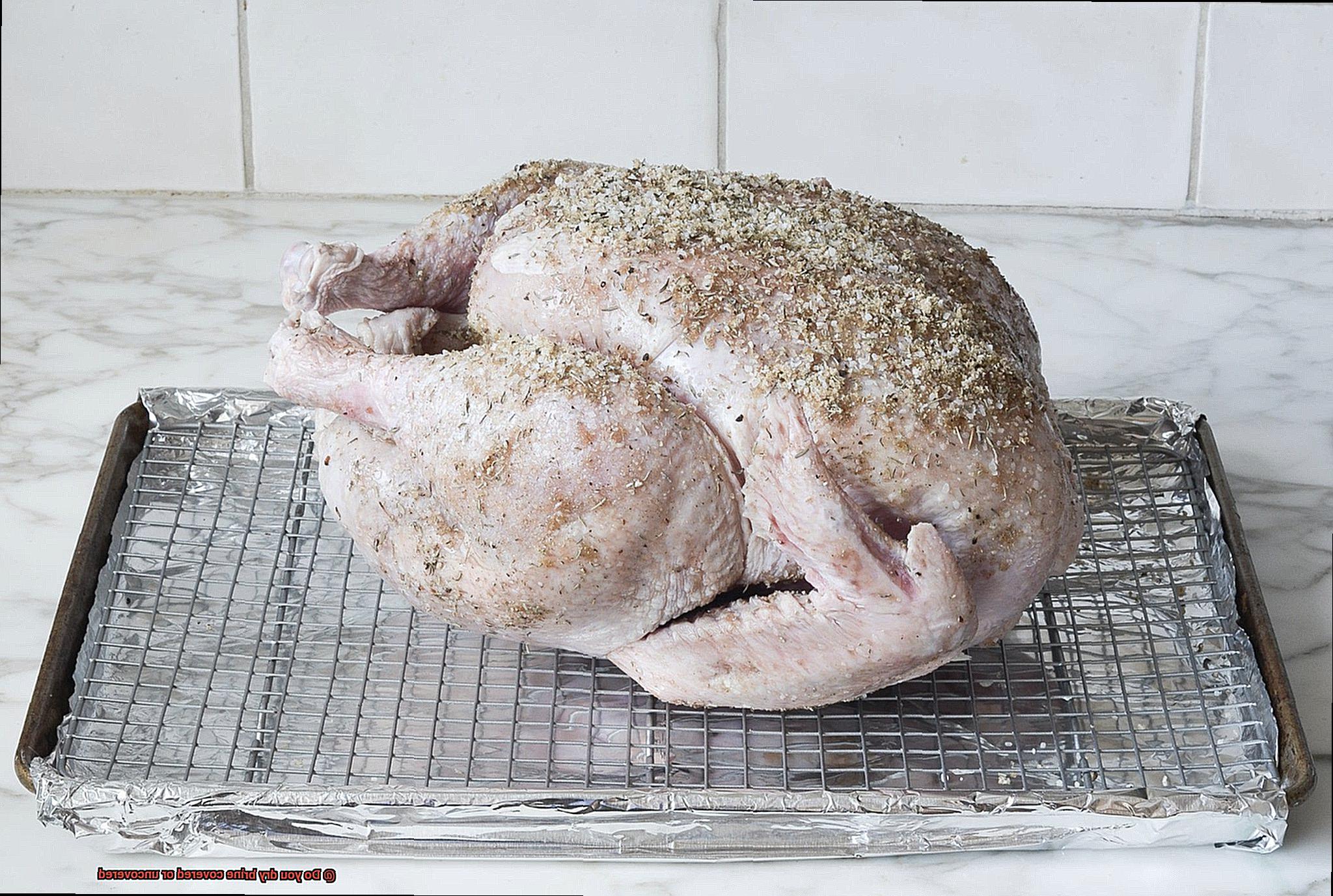
Covering or Uncovering Meat
The answer to this question is that it depends on personal preference and the type of meat being brined. Some people prefer to leave the meat uncovered during dry brining, as it allows the moisture on the surface of the meat to evaporate, resulting in a crispy exterior when cooked. This is especially true for poultry and pork, which tend to have more moisture than beef.
On the other hand, covering the meat during dry brining can help prevent it from drying out too much and becoming tough. This is particularly important for lean cuts of beef, such as sirloin or flank steak, which can easily become dry if left uncovered for too long.
Use Enough Salt
Regardless of whether you choose to cover your meat during dry brining or not, there are some tips that can help ensure successful results. Firstly, be sure to use enough salt when dry brining – 1 tablespoon per pound of meat is a good rule of thumb. Additionally, make sure to apply any other seasonings evenly over the surface of the meat.
Let it Rest
It’s also important to give the meat enough time to dry brine – at least 12 hours for chicken and pork, and up to 48 hours for beef. This resting period gives the salt enough time to penetrate the meat and work its magic.
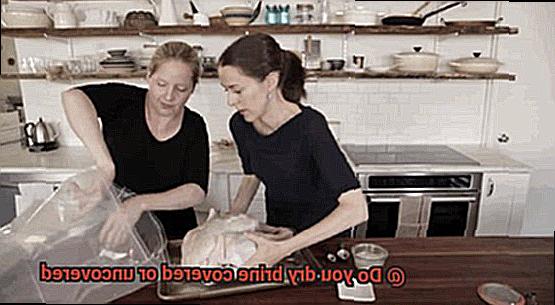
Rinse off Excess Salt
Before cooking your dry-brined meat, be sure to rinse off any excess salt and pat it dry with paper towels. Leaving too much salt on the meat can result in an overly salty flavor.
Experiment with Seasonings
Finally, don’t be afraid to experiment with different seasonings and flavor combinations when dry brining. While salt is the most important ingredient, you can also add herbs, spices, and other flavorings to your dry brine mixture to create a custom flavor profile that suits your tastes.
Common Mistakes to Avoid When Dry Brining
Dry brining is a fantastic technique for enhancing the flavor and texture of meat before cooking. However, there are some common mistakes that people make when dry brining, leading to less-than-desirable results. To ensure your meat is perfectly seasoned and moist, let’s dive into the most common mistakes to avoid when dry brining.
Firstly, don’t skimp on the salt. Dry brining requires a significant amount of salt to properly penetrate the meat and bring out its natural flavors. Using too little salt will result in bland and tasteless meat. As a rule of thumb, use 1 teaspoon of kosher salt per pound of meat, but for larger cuts like a whole turkey or brisket, you may need to increase the amount.
On the other hand, using too much salt can lead to overly salty and unpleasant meat. Don’t exceed 1 tablespoon of kosher salt per pound of meat. It’s essential to strike a balance between using enough salt to enhance the flavor and not overdoing it.
Another mistake to avoid is not giving your meat enough time to dry brine. Dry brining requires patience and time, so plan on at least 12-24 hours for most cuts of meat. Rushing it by only dry brining for a few hours or overnight won’t allow the salt to fully penetrate the meat and enhance its flavor.
Before dry brining, make sure to pat down your meat properly to remove any excess moisture from its surface. This step helps ensure that the salt can fully penetrate the meat and bring out its natural flavors.
Lastly, avoid covering your meat while dry brining. While it may seem like a good idea to prevent cross-contamination and keep your kitchen clean, covering your meat can trap moisture and prevent it from drying out properly. Leaving your meat uncovered while dry brining ensures that it dries out appropriately, allowing the salt to properly penetrate the meat.
Conclusion
Dry brining is a game-changing technique that can transform any meat dish into a flavorful and juicy masterpiece. However, the question of whether to cover or leave the meat uncovered during dry brining often perplexes even seasoned chefs. The answer ultimately depends on your desired outcome, the type of meat, and your refrigerator space.
If you’re looking for crispy skin and intensified flavor, leaving your meat uncovered during dry brining is the way to go. On the other hand, covering your meat can help retain moisture and result in a more tender and succulent end product. So choose wisely.
But regardless of which method you opt for, there are some crucial tips to keep in mind for successful results. Make sure to use enough salt when dry brining and apply seasonings evenly over the surface of the meat. Give it ample time to dry brine, rinse off any excess salt before cooking, and pat it down properly before starting.
Avoiding common mistakes like skimping on salt, not giving your meat enough time to dry brine, or covering it while doing so will help you achieve perfectly seasoned and moist meats every time.

